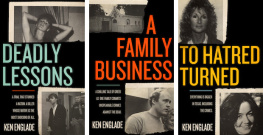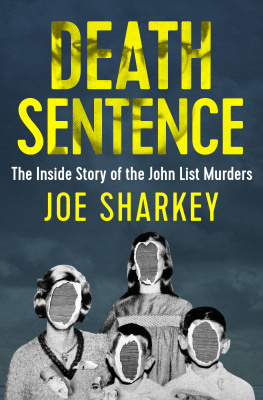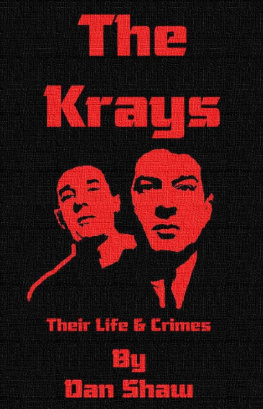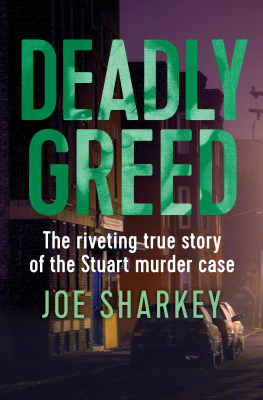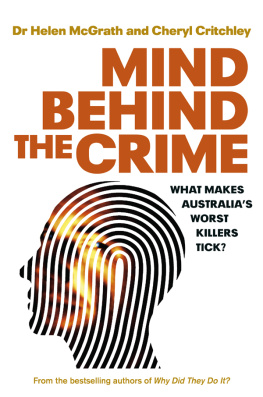Murder in Boston
Ken Englade
Copyright
Diversion Books
A Division of Diversion Publishing Corp.
443 Park Avenue South, Suite 1008
New York, NY 10016
www.DiversionBooks.com
Copyright 1990 by Ken Englade
All rights reserved, including the right to reproduce this book or portions thereof in any form whatsoever.
For more information, email
First Diversion Books edition December 2014
ISBN: 978-1-62681-501-8
More from Ken Englade
A Family Business
Deadly Lessons
To Hatred Turned
For the Yankee branch: Ron, Regina, Alison, and Emily
Acknowledgments
Without special help from a number of people, this book would not have been possible. The road to publication was not always straight and clearly marked, but when I tended to go off on a secondary trail or got lost in the forest of Boston politics, these people helped me get back on course. Whether I succeeded in staying there has yet to be determined. Nevertheless, I am extremely grateful for their assistance and support. Dr. James Smith stole time from a busy practice to keep me honest. He had the toughest job of all, but he did it well. Similarly, my daughter, Michelle, who should have been studying for her bar exam, used her time instead to perform valuable legal research. I hope her future clients appreciate her work as much as I. Ron and Regina Englade fielded a million of my questions and patiently suffered my ramblings. That is above and beyond the call of family, but they didnt hesitate. Others also helped in a hundred different ways, sometimes when they may not have even realized how much of a service they were performing. They include, but are not limited to, Sergeant Leo Gerstel, Gary McLaughlin, Lieutenant Dave Peterson, Robert Abrams, Mary Travers, Terry Ann Knopf, Cheryl ODonnell, Tom Janssen, Mark Jurkowitz, and Kevin Convey. And, of course, there is the person who made it all possible: my editor, Charles Spicer. May they all be rich and happy.
Authors Note
In the late 1800s Roman Catholic authorities in Boston ordered the establishment of a mission to serve poor immigrants who were flowing into the area from Ireland. The mission centered around a church, Our Lady of Perpetual Help, which was built atop an elevation called Parker Hill. The church was consecrated in 1877, and from then on the piece of landscape on which it was built began taking on a new identity. Over the years the name Parker was lost and the area became known simply as Mission Hill.
The first pastor of the mission was the Reverend James Healy, the son of an Irishman and a former slave. Healy later became the countrys first black Catholic bishop. His mixed-race heritage set the tone for the neighborhood, which now is one of the most diverse in Boston with a population of 45 percent white, 30 percent Hispanic, 20 percent black, and 5 percent Asian. The broad mix, however, does not by any stretch of the imagination insure tranquility. Healys ascent to prominence and responsibility proved a poor man from a racial minority could rise above such handicaps. But those were the days before drugs, apathy, street crime, and racial animosity spread throughout the neighborhood like a plague. By the autumn of 1989 Mission Hill had a reputation as a crime-infested ghetto where casual visitors, especially white visitors, were both unwelcome and unsafe. It was an area that many savvy Bostonians regarded with caution. It was a neighborhood through which white motorists drove warily, if at all. While they were in transit, they commonly rolled up their windows and locked their car doors. It was an area where anything could happen and more than likely would. Generally speaking, Bostonians were ready to believe any horror story at all about Mission Hill, particularly if race were a factor. That did not excuse what was to unfold in Mission Hill in the forthcoming days and weeks, but it helped explain why events transpired as they did.
The full story of what happened in Mission Hill has not yet been told. Perhaps it never will be. It is only in fiction that murders are neatly solved and all the loose ends are conveniently tied up. The reader will not find that to be the result in this instance. There are considerably more questions about what really happened on the night of October 23, 1989, than there currently are answers. But that in itself is part of the story. In the following pages, I have tried to present all the publicly known facts surrounding the murder of Carol Stuart and the alleged suicide of her husband. In some cases I show where the facts do not fit the circumstances. In other cases I show where there are exceedingly valid questions that remain unanswered. And they will remain that way until authorities are more forthcoming with things they do know the answer to, basic things valuable to the resolution of any murder, things like the ballistics report on the pistol pulled from the Pines River, the text of the note found on the seat of Charles Stuarts car, the autopsy reports on Charles and CarolBut Im getting ahead of the story.
The fact that many of these details are not known puts everyone on an equal footing. Every reader can become an armchair detective. Every reader can come to his or her own conclusions. Everyone is entitled to an opinion. Ill give you mine at the other end of the text, but along the way I will show how and why I have come to that point.
This will not be the definitive book on the deaths of Charles and Carol Stuart. It is, in a sense, an interim report designed to offer food for thought as much as to explain. If nothing else, it will show why this is such a complex case and why it is a mystery that will continue to fascinate readers of true crime for years to come.
Ken Englade
Chapter 1
October 23, 1989
Monday
8:10 P.M.
Carol Stuart crawled awkwardly into the Toyotas passenger seat, straining with a frustration familiar to every woman who has ever carried a child. At seven months Carol was obviously pregnant and feeling more bloated by the hour. Even everyday tasks, like putting on her shoes and getting in and out of a car, were becoming more strenuous, more aggravating. It was a burden, but it would soon be over, she reminded herself, and then it would have all been worth it. Her delivery would not only be a personal relief, but it would be the most wonderful gift she could give her husband, Chuck, both for Christmas and his birthday, which was one week earlier. Let it be a boy, she had been praying ever since shed got confirmation from her doctor, a son to make Chuck happy. He loved children, she knew, because he spent hours working with them in his old neighborhood, refereeing their basketball games and coaching the Little Leaguers. Chuck himself had been through the programs, playing both baseball and basketball. Now, nearing thirty, he wanted to give something back, to help other clumsy youngsters as he himself had been helped. Soon, she hoped, he would have one more boy to coach: his own son. And one of the most wonderful things about her first pregnancy, Carol thought, smiling inwardly, was the timing. What better time could a good Catholic girl from a devout Italian family have picked to have a child than at Christmas?
These thoughts cheered her, made her feel less like a bandy-legged behemoth. But then the depression intruded again. As she struggled to stretch the seat belt across her distended abdomen, she wondered how many more times she was going to have to lengthen the strap to accommodate her growing bulk. But the concept was fleeting. A happy, cheerful person by nature, Carol seldom dwelt on negatives. All her life she had been a bubbly, extroverted person, one who invariably saw the good side of everything, especially people. Carol always had something nice to say about everyone, no matter how aggravating an individual appeared to others. It was a wonderful trait to possess in an increasingly cynical world, and it represented her true beauty. A pretty enough girl with long dark hair and flashing brown eyes, she could nevertheless hardly be regarded as glamorous. Her mouth was too wide, her nose a little too prominent, for her ever to be considered as a magazine cover girl. But her loveliness came from within. When she smiled, two rows of startlingly white teeth shone like a beacon to her soul. It was almost impossible for anyone to talk to Carol for more than five minutes and not come away feeling refreshed. She was intuitive about others problems, seeming to know by instinct what to say and how to soothe. This in itself was a reflection of her intelligence, a mirroring of her ability to reason and understandand the desire to want tothat made her a top student through high school and won her membership in the prestigious National Honor Society. At Boston College, a respected Catholic university only fifteen miles from her parents home in suburban Medford, her grades put her near the top of her class. After she earned her undergraduate degree in political science, having early on abandoned the desire to follow her older brother into education and be, like him, a high school teacher, she enrolled almost immediately in the law school at Suffolk University, a Boston institution popular with fledgling politicians. With her J.D. degree and bar passage certificate in hand, she knocked on the door of a local publishing company and was immediately hired to work as a tax attorney. But at age thirty, a few months older than her husband, she began to think more about a family than a career. It was time to have a baby, she decided.

